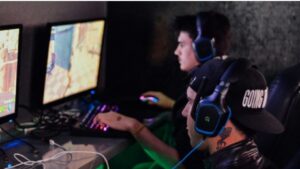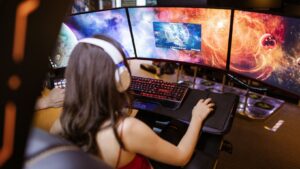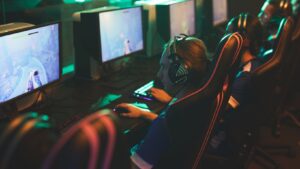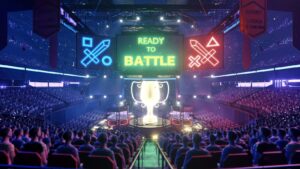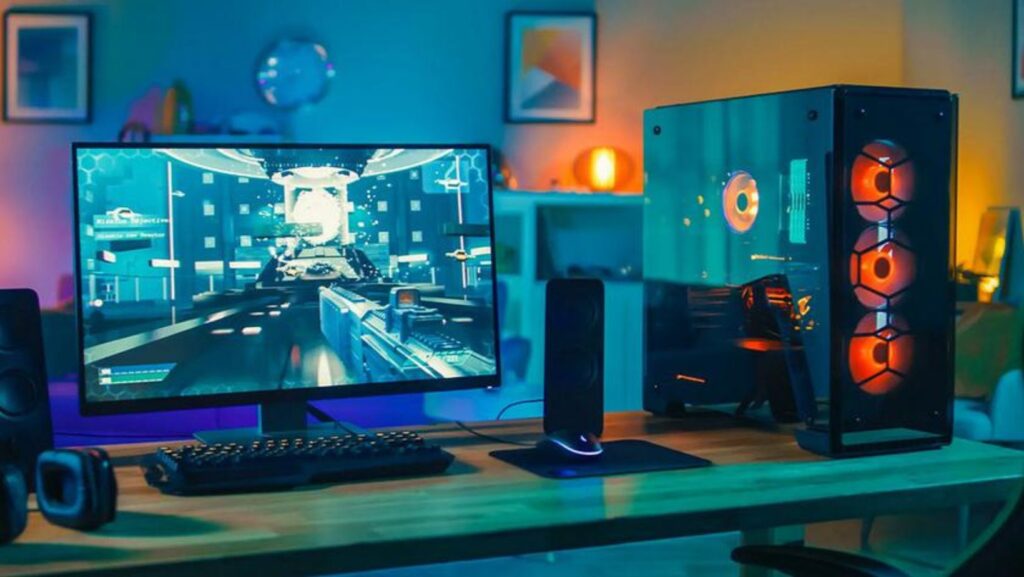
It may be surprising, but in-game settings can often be the root cause of problems. Certain games may have a frame limit in place, restricting your maximum FPS. Additionally, enabling v-sync can also limit your FPS and disrupt your gaming experience. It’s important to remember that even if you’re solely focused on your game, your computer might be occupied with other tasks as well. Background applications running on your machine can consume processing power and lead to lag. Furthermore, lag can also stem from graphics driver issues or conflicts with other drivers on your system. Below, we have provided a list of common issues that could potentially slow you down.
Overheating
According to stats, 67% of adults in the U.S. play games. If you are using an older PC or pushing your current PC to its limits, you may experience thermal throttling. This occurs when components become too hot during heavy use, approaching their maximum operating temperature. As a result, the performance of the PC decreases in order to manage the increased temperatures. This decrease in performance can cause lag or a sudden drop in FPS in games, which is often frustrating for PC gamers.
In case your computer is experiencing overheating issues, there are several steps you can take to address this problem. A basic solution involves cleaning the fans and dust filters, which can significantly improve airflow. Additionally, opening a window or relocating your computer to a well-ventilated area can prevent heat buildup. For more severe cases, replacing the thermal paste is a more extensive measure that allows you to enjoy high-performance play. Alternatively, adjusting the fan speed settings on your PC might also alleviate the issue.
Connectivity
Often, the lag experienced while gaming is not due to PC problems but is instead caused by a slow internet connection. High pings and sluggish internet can lead to unpleasant multiplayer gaming experiences. While tools like SpeedTest can provide information on internet speed, including ping and upload/download speeds, they may not resolve the problem entirely.
You can experience the ultimate gaming protection with a reliable VPN for gaming. Shield yourself from DDoS attacks, stay safe from swatting incidents, and confidently explore public Wi-Fi networks while enjoying your favorite games.
Additionally, be among the first to play new releases and witness reduced lag and ping times. Unleash your gaming potential today with VeePN. If you are experiencing a noticeable decrease in your internet speed that is not consistent with the service promised by your internet service provider (ISP), it is possible that there is a problem with the signal or hardware. To address this, consider enhancing your home network. For instance, if you are currently using a wireless connection, try switching to an ethernet connection for your gaming PC. Using an ethernet cable will provide a more stable and reliable connection, resulting in improved performance overall.
Outdated Setup
26% of gamers spend 1-5 hours on their hobby every week. If you have an old system that you’ve been using for some time, it’s likely that you’ve already upgraded your graphics card. Upgrading the GPU is a simple task, but doing so without considering other components can lead to problems, such as system bottlenecking. This occurs when one part of the system is significantly more powerful than the rest. For example, if you’re playing games with an Intel Core i3 processor and an RTX 3090 Ti, you may already be experiencing this issue.
To improve your overall system performance and enhance your machine without replacing it entirely, it is advisable to consider upgrading your CPU and adding more RAM. When playing games on a laptop, it is important to note that many modern thin and light laptops require a power supply for a smooth gaming experience. Nvidia’s Advanced Optimus technology is designed to enhance battery life but at the expense of performance.
Therefore, it is not possible to play demanding games without being plugged in and still have a smooth experience with high FPS. By connecting your laptop to a power source, you will notice a significant improvement in FPS and overall gaming experience.
GPU Issues
Graphics lag, the ultimate frustration for gamers, occurs when your system is unable to produce enough Frames Per Second (FPS) for smooth gameplay. This results in a decrease in the responsiveness of your controls, making it difficult to react quickly in intense gaming moments. But how can you determine if graphics lag is truly the culprit? By using the free FRAPS utility, you can scientifically measure your framerate. Simply launch FRAPS before playing your game and take note of the FPS figure it provides. If the yellow counter drops below 25-30 FPS, especially in fast-paced games, you will experience graphics lag to some extent. If it falls below 15-20 FPS, the impact will be even more noticeable. If you find yourself facing significant framerate dips, there are two solutions available. Firstly, customize your game’s graphics settings and optimize Windows to consistently achieve higher FPS.
Certain settings can greatly impact performance. Features like antialiasing and ambient occlusion, for example, can significantly reduce your framerate. If you’re experiencing choppiness, try turning these settings off. And if you’re really struggling, consider lowering the graphics resolution.
For lag-free gaming, it’s crucial to focus on maintaining a minimum FPS. It’s no use having a high frame rate most of the time if it drops dangerously low during intense combat situations. While upgrading your hardware can be expensive, there may come a point where optimization alone won’t cut it. In these cases, investing in a new, more powerful graphics card can make a big difference.










